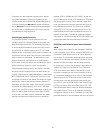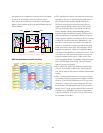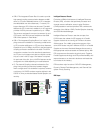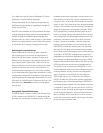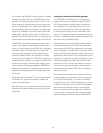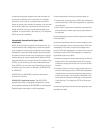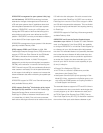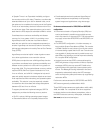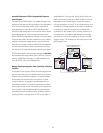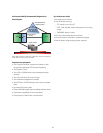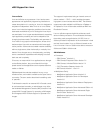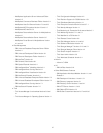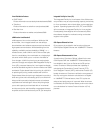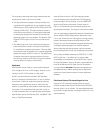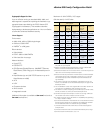43
of Sysplex Timers in an Expanded Availability confi gura-
tion remains at 40 km (25 miles). Therefore, to achieve the
extended distance of up to 100 km between sites, one of
the options to be considered is locating one of the Sysplex
Timers in an intermediary site that is less than 40 km from
one of the two sites. Other potential options can be evalu-
ated when the RPQ request is submitted to IBM for review.
Coordinated near continuous availability and disaster
recovery for Linux guests: z/VM 5.1 is providing a new
HyperSwap function so that the virtual device associ-
ated with one real disk can be swapped transparently to
another. HyperSwap can be used to switch to secondary
disk storage subsystems mirrored by Peer-to-Peer Remote
Copy (PPRC).
HyperSwap can also be helpful in data migration scenar-
ios to allow applications to use new disk volumes.
GDPS plans to exploit the new z/VM HyperSwap function
to provide a coordinated near continuous availability and
disaster recovery solution for z/OS and Linux guests run-
ning under z/VM. This innovative disaster recovery solution
requires GDPS, IBM Tivoli System Automation for Linux,
Linux on zSeries, and z/VM V5.1 designed to help antici-
pate and rapidly respond to business objectives and tech-
nical requirements while maintaining unsurpassed system
availability. This solution is may be especially valuable
for customers who share data and storage subsystems
between z/OS and Linux on zSeries.
To support planned and unplanned outages, GDPS is
designed to provides the following recovery actions:
• Re-IPL in place of failing operating system images
• Site takeover/failover of a complete production site
• Coordinated planned and unplanned HyperSwap of
storage subsystems transparently to the operating
system images and applications using the storage
Performance enhancements for GDPS/PPRC and GDPS/XRC
confi gurations
• Concurrent activation of Capacity BackUp (CBU) can
now be performed in parallel across multiple servers,
which may result in an improved RTO. This improvement
may apply to both the GDPS/PPRC and GDPS/XRC con-
fi gurations.
• In a GDPS/XRC confi guration, it is often necessary to
have multiple System Data Movers (SDMs). The number
of SDMs is based on many factors, such as the number
of volumes being copied and the I/O rate. Functions are
now capable of | being executed in parallel across mul-
tiple SDMs, thus helping to provide improved scalability
for a coupled SDM confi guration.
• Analysis has shown that PPRC commands issued by
GDPS will generate a large number of Write to Operator
messages (WTOs) that may cause WTO buffer short-
ages and temporarily adversely impact system perfor-
mance. The Message Flooding Automation function is
expected to substantially reduce the WTO message
traffi c and improve system performance by suppressing
redundant WTOs.
Performance enhancements for GDPS/PPRC and GDPS/
XRC became generally available March 2003.
These GDPS enhancements are applicable to z800, z900,
z890, and z990. For a complete list of other supported
hardware platforms and software prerequisites, refer to
the GDPS executive summary white paper, available at:
ibm.com/server/eserver/zseries/pso



